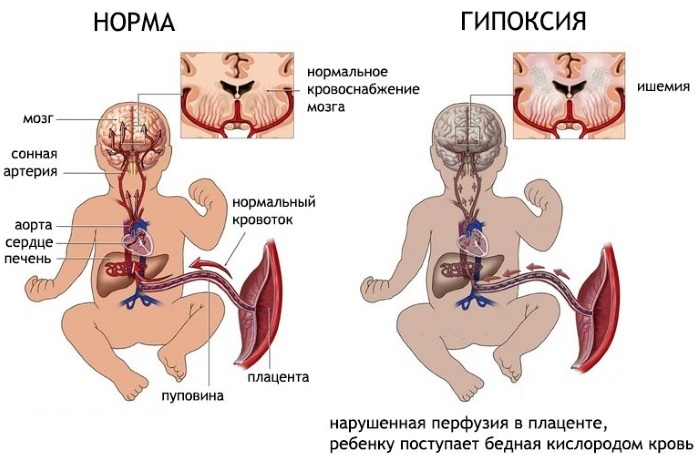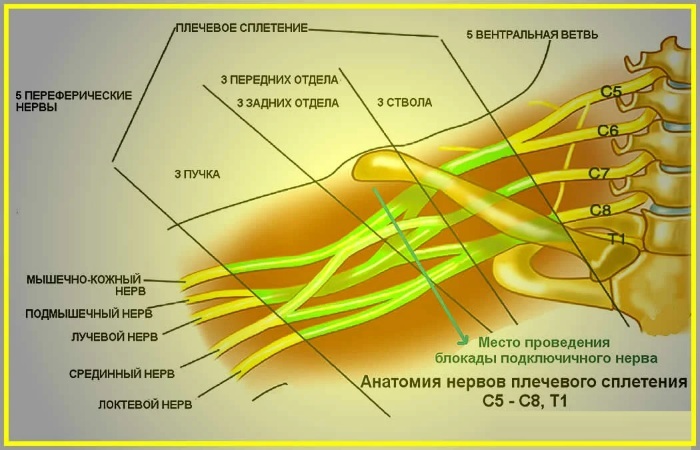Active jogging is not complete without injury. It is also possible that the soleus muscle is pinched, which is on the shin. There is a aching pain.
Sports will only be beneficial if a person studies his body and learns to listen to it. But, if, nevertheless, it was not possible to avoid injury to the muscle, it is important to make a decision on the correct treatment, which the attending physician will tell about.
The triceps muscle of the lower leg is formed from the gastrocnemius and soleus muscles. It is this reunion that controls the foot, sets it in motion, bends the sole in the right direction. Plays a large role in the performance of jumps, and all kinds of running, serves as a muscular venous pump.
Record content:
- 1 What is the soleus muscle
- 2 Functions
- 3 Structure
- 4 Types of diseases
-
5 Symptoms
- 5.1 Pain while driving
- 5.2 Pain in trauma
- 6 The causes of organ diseases.
- 7 Diagnostics
- 8 When to see a doctor
- 9 Prophylaxis
- 10 Treatment methods
- 11 Medications
- 12 Traditional methods
- 13 Other methods
- 14 Possible complications
- 15 Calf Videos
What is the soleus muscle
The triceps muscle is a unique complex structure in the lower leg. It has a thick, wide goal-like plane that lies in the gastrocnemius muscle.
Functions
Thanks to the triceps muscle, the human foot is extended in the plantar direction. With the help of the plantar, long and short peroneal, posterior tibial, muscles flex the foot to the ankle, when the knee is extended, and if the knee is bent, the sole is bent only the soleus muscle.
This organ stabilizes the knee joint under postural, static and dynamic stress. Participates in the minor work of flexion of the knee joint, covering the gracilis and sartorius muscles, which are the opposition of the quadriceps. The main work is manifested in running, cycling, jumping and squatting.
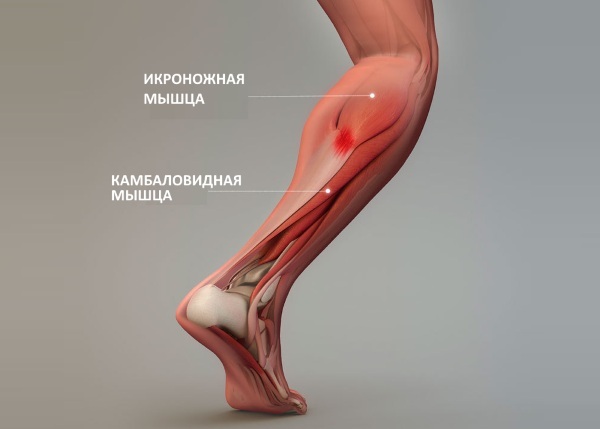
They share 2 functions:
- when a person jumps, the legs are bent at the knees and the push is made with the socks, after which the legs are straightened - this is where the organ is involved;
- when the legs are straightened, the gastrocnemius muscle begins to take part, therefore, the sole responsibility of the soleus muscle is to distribute and withstand the load with even legs.
When the soleus muscle contracts, it compresses the fine veins, allowing blood to flow back to the heart. The work of blood flow is that small valves resist gravitational pull, allowing blood to move towards the heart.
Therefore, the process of returning blood is directly related to the expulsion of blood by the soleus muscle - because of this unique process, it is called the "second heart".
Structure
The soleus muscle is located on the back of the lower leg under the calf “heads”. The muscle can be called one large bundle of fiber that has a flattened shape. 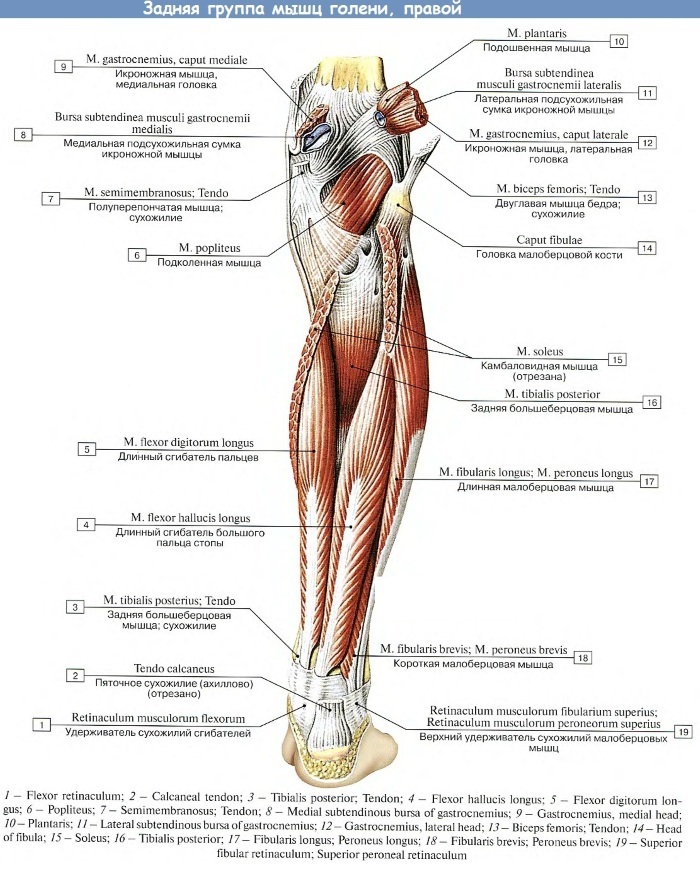 The attachment is the Achilles tendon, which is in contact with the calcaneal tubercle, which supplies blood to the calf arteries.
The attachment is the Achilles tendon, which is in contact with the calcaneal tubercle, which supplies blood to the calf arteries.
Types of diseases
Pain in the soleus muscle is a symptom of a universal nature, which can be in different diseases. Since the blood supply originates from the popliteal arteries, endothelial cavities (sural sinus) are formed in the muscle mass.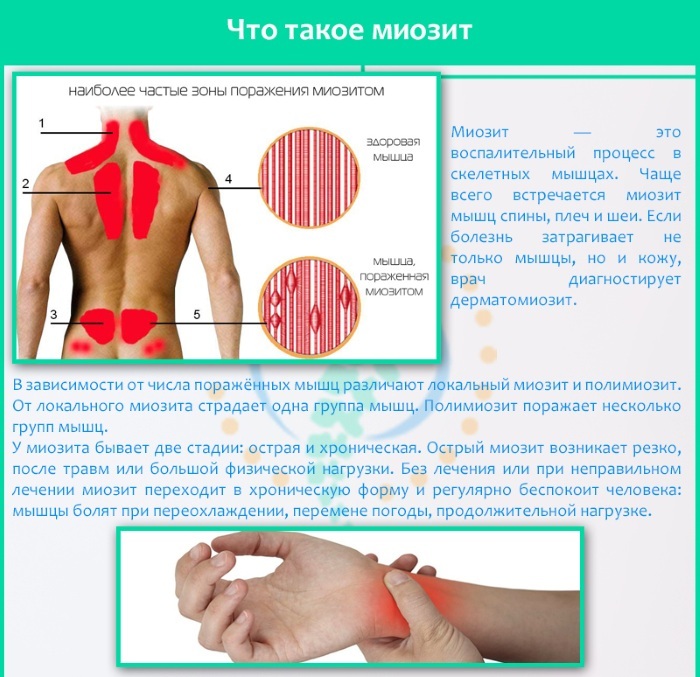
| Stenosoliya | A disease characterized by constricting, constricting pain in the red muscle lasting more than a minute. Covers one part of the middle section from the outer or inner side of the fibula. It manifests itself in excruciating pain with burning and numbness. If you feel the edges of the muscle along the lateral and medal heads, you can determine the hypertonicity of the area. |
| Polymyositis | Autoimmune disease of the soleus muscle, which is manifested by intoxication and dull pain when moving. The muscle becomes swollen and painful on palpation, after a while nodes, fibrosis, and calcifications are felt. |
| Myositis | Cancer, parasitic disease, complicated by colds, trauma or overexertion. |
| Fibromyalgia | A disease of autoimmune origin, manifested by intense constant pain, severe weakness in the soleus muscle, which is in daily morning stiffness. |
| Crumpy | A short-term, localized painful cramp that compresses and tightens the muscle. Muscle contraction occurs slowly and lasts from 1 second to 1 minute. The reason lies in the malnutrition of the nerve endings. Cramps occur at night or after grueling exercise. |
| Calf muscle rupture | A rupture symptom is almost indistinguishable from overvoltage. If you do not identify the cause of the pain in time and give a periodic load, the muscle may overstrain. It is manifested by a sharp and sharp pain, the presence of something bursting or torn. |
Symptoms
The pathology of the anatomical organ is manifested by such a symptom as fainting or swelling of the legs.
Pathological changes in painful sensations are manifested in the following areas:
- the back of the calves;
- heels and soles;
- loin and sacrum;
- foot joints;
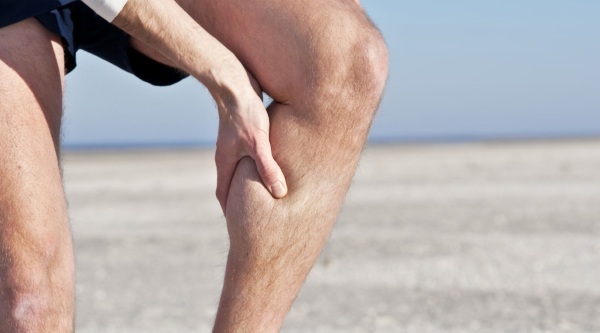
Basically, the pain radiates to the heel zone. A person may be disturbed by sleep disturbances and restrictions on movements, lameness, difficulty walking, night aching pain, increased tension appear.
The flexion function becomes limited, there is dull mobility of the toes. If movement restrictions continue, inflammation of other parts of the body is possible. The work of the soleus muscle can be replaced by the trunk muscle structures. May occur when climbing a mountain, from a chair, leaning towards the floor, or going down stairs. Symptoms vary for a number of reasons.
Pain while driving
A symptom of a sharp painful flash in the leg or aching back pain, discomfort in the buttock. This condition is provoked by prolonged immobility or sitting, physical activity, stress.
Pain in trauma
Appears when a gap occurs - full or partial. The symptom is a swollen, painful area. The gap can be located anywhere in the soleus muscle.
A stretching of the soleus muscle, a person may not feel, and painful sensations and swelling will appear in a few hours. The main thing is to be able to distinguish between a rupture of the soleus muscle from other injuries, which is located in the back of the lower leg.
The clinical symptoms of the soleus muscle manifest a protective response of the body. Pain signals that you need to protect the limb from further stress. Micro-rupture of the fiber is provoked by the development of inflammation and swelling of the soft tissues.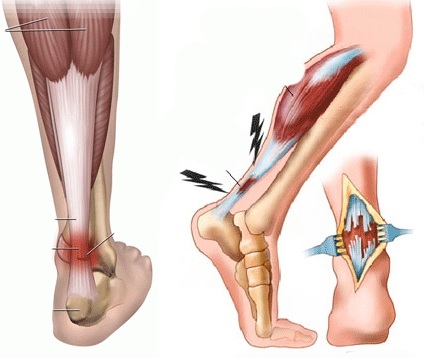
The defeat of the soleus muscle is divided into 3 degrees:
- I degree - It is manifested by slight stretching in the muscle fiber. Has moderate pain that appears some time after injury. Maybe swelling, deviations in limb movements with increased pain or tension.
- II degreeb - part of the fiber is torn. Acute pain and swelling of the lower leg is present. Hematomas are possible. The muscle hurts when moving.
- III degree - the muscle is completely torn and detached from the Achilles tendon. Pathological mobility of the ankle appears. It is characterized by painful shock, the formation of an extensive hematoma. At the first onset of symptoms during an injury, muscle rupture can be suspected.
The causes of organ diseases.
The soleus muscle is in motion, when the ankle is extended and the muscular venous pump is functioning.
- Pain occurs during physical exertion. If a person has untrained muscles, legs will hurt after running. This happens because tissues accumulate lactic acid during a heavy load, not having time to excreted properly, and the human body, in turn, begins to experience painful Feel.
- The pain can appear with a long immobility or tension. For example, on the plane, at the desk, walking on tiptoes. The blood begins to stagnate, the muscle pump stops working, because of this, blood stops flowing from the legs to the heart. Arteries accumulate with endotoxins, circulation and oxygen supply are disturbed - all this leads to severe pain. You can fix everything by raising your legs to the level of the heart and keeping them in this position for 15-30 minutes.
- If a person works in the same position and the ego cannot be changed, varicose veins of the limbs are formed. Only with daily prophylaxis can this disease be prevented. You can do light exercise, or if possible, raise your legs, resting them on a pillow.
- Flat feet also cause pain in the soleus muscle. The shape of the feet changes with age, and walking becomes difficult, pain appears up to the knee area. To solve this problem, exercise therapy is used and specialized shoes for flat feet are worn. But first you need to visit a doctor.
- The human body has many parasites in itself, and those that are harmful to health can colonize. These include the larvae of trisinellosis. Due to their penetration into muscle tissue, severe pain, allergies and fever are felt.
- Nerves have a strong effect on the well-being of the legs. With inflammation of the sciatic nerve, pain in the buttocks is felt, which then goes down. The reasons for this phenomenon are varied, but doctors are inclined towards diabetes.
- Cramps are not an uncommon cause of muscle pain. Contractions and sharp pain occur. This happens if the body is dehydrated, not filled with magnesium, potassium, calcium.
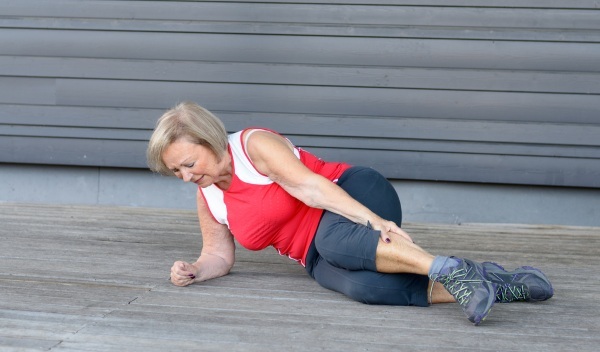
- Any disease of the spine also leads to muscle pain that begins in the lower extremities, but there is no pain in the vertebra. Excess weight, in turn, affects the health of the spine and legs. Therefore, all diseases are interrelated, regardless of age.
- Cellulite inflammation with ulcers is mainly the cause of leg pain. If the skin is damaged, pathogenic microorganisms enter the cells. Therefore, it can lead to severe pain, high fever, weakness.
Diagnostics
The pathology of pain of the soleus muscle is carried out by clinical and instrumental studies. Turning to a doctor, he will exclude the reasons that pose a health hazard - thrombophlebitis, thrombosis, cancer and various infections.
Inflammation of veins and blood clots is determined by an ultrasound Doppler system. Problems with blood permeability are identified, and transillumination will show damaged veins. The use of duplex angioscanning will show the state of the blood clots, their age, and the state of the lumen.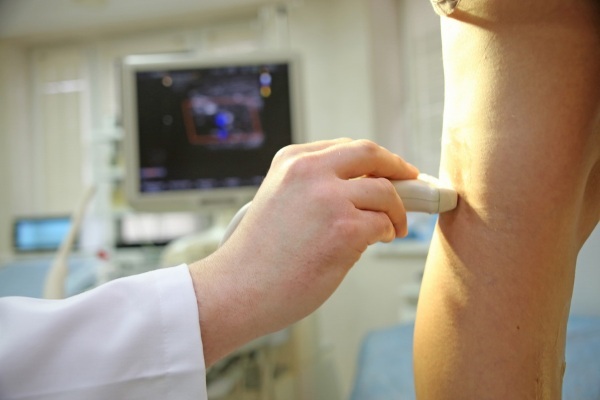
If the doctor suspects that the muscles are sore from the spine, he or she will order x-rays of the hip joints and the pelvic-sacral joint. Magnetic resonance imaging is also used, and a blood test will show the percentage of trace elements in the blood.
When to see a doctor
The trip to the doctor should start from the outpatient department to the general practitioner. First of all, he examines the patient, writes out a referral for tests and other examinations. Make up a pre-treatment to relieve soleus muscle soreness. After a comprehensive examination, the doctor will take further action.
If necessary, a narrow specialist will write out a referral, because without preliminary analyzes, a narrow specialist will not undertake to examine the patient, since it is pointless.
Based on the above, the following symptoms are distinguished, by which they determine when to go to the doctor:
- Severe pain in one or both legs for 4 or more days.
- Numbness of the limbs, feeling weak, hot and cold.
- Painful sensation that can radiate to another part of the body.
- The skin has acquired pallor and cyanosis.
- Legs constantly freeze and swell.
- Restricted movement with hardened muscles.
- Painful flexion and extension of the joints.
Prophylaxis
To avoid pain in the soleus muscle, you need to adhere to some rules:
- Fatty foods are excluded in case of problems with blood vessels
- Make adjustments to your weight
- Apply daily exercises to strengthen the muscles.
- With a sedentary lifestyle, it is important not to forget about morning exercises.
- When training, pay attention to the signals of your body, if there is discomfort, you need to stop.
- Warm up correctly, starting warming up the muscles with a light jog.
- After an intense workout, don't forget to stretch.
Treatment methods
Painful sensations in the muscles can occur due to problems in the spine. Massages of a therapeutic nature can help here. To prevent pain, you need to go on a diet that is not in one position for a long time.
Medications
The soleus muscle is located between the calf bone and the gastrocnemius muscle. If the calf muscle is shortened or enlarged in diameter, then it creates pressure on the soleus muscle, pushing it towards the shinbone. Therefore, the soleus muscle is clamped, and then pain and inflammation follow.
Depending on the severity of the injury, various measures can be taken to support the natural healing process. If pain in the soleus muscle cannot be tolerated, medications are used. For this case, there are creams and ointments based on anesthetic.
Treatment in the first three days can take the following measures:
- Decongestant ointments (eucalyptus balm, arnica-based sports ointment).
- Taking anti-inflammatory drugs (Diklak-gel, Menovazin, Fastum-gel). These anti-inflammatory nonsteroidal agents are applied 3 times a day using light circular motions. Finelin, Warfarin are taken in the form of tablets.
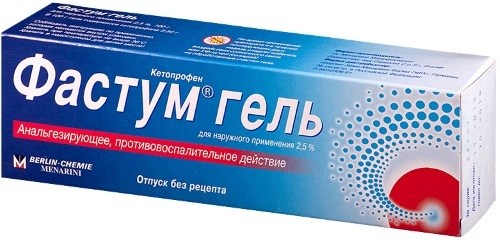
- Taking medications that thin the blood (Arixtra, Zilt, Plavix).
- Reception of muscle relaxants that reduce muscle tension (Pancuronium, Mivakurium, Trubocurarin).
After 7 days of pain, treatment should be continued with warming ointments such as Viprosal or Ben - Gay. These agents, stimulating microcirculation in tissues, restore elasticity to the soleus muscle. It will also help to overcome pain, an ointment based on snake venom.
Inside, non-steroidal, anti-inflammatory drugs, groups of analgesics are also used (Revmaxikam, Fanigan, Ibuprofen, Meloxicam).
A deficiency in the minerals sodium, potassium, or magnesium can lead to muscle pain. Sodium and potassium are important for fluid balance and nerve and muscle function. Magnesium is also essential for nerve and muscle function and is involved in energy metabolism. However, minerals should not be taken without medical advice. Here it is necessary to make a clinical blood test in advance.
Traditional methods
Alternative medicine also has an important place in the treatment of muscle pain. Foot baths with mint, linden blossom or lemon balm are common methods. They also prepare ointments and rub them into a sore spot at night.
- Mix egg yolk (1), turpentine (1 tsp. l.), apple cider vinegar (1 tsp. l.). All are mixed until a thick consistency. The ointment can be used immediately after preparation. Rub it in at night and wrap it up with a warm terry cloth.
- You can relieve muscle pain with the help of cabbage leaf and baking soda. Grind the sheet in a meat grinder, add 2 tsp. l. soda, stir. The compress is applied 2 times a day for 20-30 minutes.
- Mix badger fat (1 tbsp. l.), honey (1 st. l.) and turpentine (1 tsp. l.). Everything is mixed and rubbed into painful muscles.
When burning in the soleus muscle, use a compress on water and alcohol, in a ratio of 1: 1. The bandage is applied for 30 minutes, 2 times a day.
Pepper tincture has a warming effect, which is also used to warm the soleus muscle. An infusion set can be purchased at a pharmacy or you can make your own at home.
This will require:
- chopped red chili (2 pcs.);
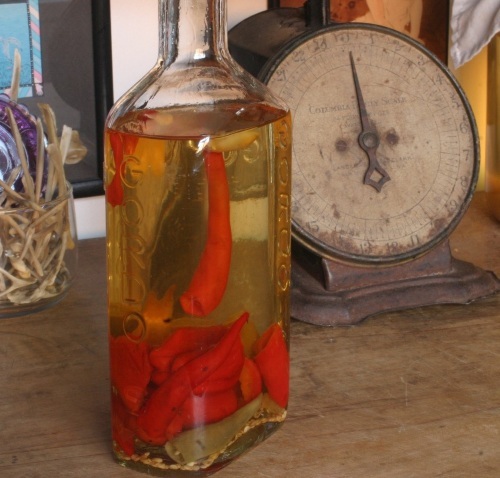
- honey (2 st. l.);
- moonshine (250 ml);
- celery, dill and cumin are used dry in 2 tbsp. l.
Everything is mixed and infused for 5 days in a dark, cool place. Then shake and strain. Use in the form of lotions for 15 minutes, in the morning and in the evening.
Apply a medicinal bath with the addition of pine needles, chamomile. Medicinal plants are valuable for their oils, vitamins and amino acids. They relieve inflammation and normalize tissue blood supply, relieve fatigue, tension and provide muscle tone.
Epsom salt baths will help regulate nerve signals in the body, because the effect of the salt is equal to a natural muscle relaxant. Thanks to the salt, pain is reduced and swelling is relieved. Add 1/2 tbsp to warm water. salt and lower your legs for 15-20 minutes.
Horse chestnut is often used in natural remedies for vein diseases as it provides relief and prophylaxis. Stone clover is another effective remedy.
The herb has an antithrombotic effect, promotes circulation and has a decongestant effect - all of which benefit the veins. Comfrey has similar properties and is used in both ointments and tea. However, it should be noted that effective herbs are not suitable for long-term therapy.
Other methods
The soleus muscle is from time to time in contractile processes. This reaction is accompanied by pain and swelling. Norepinephrine is released and a neuromuscular enzyme is formed. A narrow specialist will determine the method of treatment based on the type of disease.
- Massage. It is carried out only by a specialist who will relieve the overvoltage. Massage is done after removing the foci of inflammation. Home massage is not helpful in this matter, as it will only ease the symptoms.
- Physiotherapy activities. This method is used to treat myalgia. Electrophoresis is used with calcium chloride. Exceptions use electrical muscle stimulation and heat treatment.
- Gymnastic exercises. Improves the condition of the muscles during immobile work. Physical culture movements are prescribed by a specialist.
- Manual therapy. The most effective muscle treatment commonly used in China.
By applying frictional therapy, the soleus muscle heal is accelerated. The patient lies face down on a special table in the massage room. The therapist flexes the leg 90 degrees. After that, the ankle of the masseur is placed on the patient's shoulder, but the knee must be bent.
Next, the leg is clasped with hands, and the tips of the fingers should look at the calf. The lower leg is adhered to with the thumb. Then the massage therapist makes a girth of the patient's leg bent at the knee to implement smooth circular movements of the leg in a bent position. Treatment with such procedures lasts 15-20 minutes.
Kinesio therapy is another effective treatment for chronic muscle inflammation and injury. Limits the load on the injured area, heals and restores the cellular structure of muscle fibers.
The tape is applied in the direction of the fibers of all around the soleus muscles, since it is located topographically under the gastrocnemius muscle, and therefore it is sometimes impossible to tap it.
Shock wave complex therapy is also used. Thanks to a special preparation, the therapy generates an infrasound wave. The waves penetrate into the affected tissues, and increase blood flow, relieve swelling and inflammation.
Usually 5-7 sessions are enough, one of which lasts no more than 15 minutes. Contraindications to such therapy are: swelling, pregnancy. After the procedure, the pain usually stops.
In the first stage of pain, the patient needs rest. Apply ice to the sore spot for 15 minutes, every hour, which is wrapped in a towel, in order to avoid internal bleeding.
Lie down on the bed and raise your legs, resting them on the pillows. Moderate injury responds well to stretching exercises that improve circulation to the muscle.
The doctor may be prescribed muscle relaxants, which remove muscle spasm and B vitamins, which strengthen the nerves. Often, athletes use manual therapy, with the help of which muscle pain, tightness and contraction are completely relieved.
Possible complications
To prevent muscle rupture, you must constantly knead them before training. The most dangerous thing about muscle rupture is that without the correct medical assistance from the surgeon, the soleus muscle may not grow properly and be in a displaced place.
Also, chronic defects are formed that cannot be eliminated and healed, even with the help of a surgeon. Therefore, having passed the diagnosis and treatment of the muscles, you can restore the vital functions of the soleus muscle in a timely manner in order to enjoy training again.
If you experience severe painful sensations, you should definitely consult a doctor. Thanks to the complex treatment, which is at the stage of drug therapy, therapeutic exercises and massage, the soleus muscle will recover in the shortest possible time and without complications.
Calf Videos
Functional anatomy of the soleus and other lower leg muscles:

